The Chevrolet Cosworth Vega remains a fascinating chapter in automotive history, a car brimming with potential that, unfortunately, never fully materialized. Marketed as a nimble, import-fighting machine and affectionately nicknamed “CosVeg” by the media, this special Vega variant graced showrooms for a mere two model years, 1975 and 1976. Despite its short lifespan, the Cosworth Vega’s story is one of ambition, technical innovation, and ultimately, unrealized promise.
The foundation for this sporty endeavor was the Chevrolet Vega, a subcompact car launched in September 1970. Available in a variety of body styles – from a practical two-door hatchback to a utilitarian sedan delivery – the rear-wheel-drive Vega quickly garnered attention, even earning Motor Trend‘s prestigious 1971 “Car of the Year” award. However, beneath the initial accolades, the Vega was beginning to face challenges that would eventually impact the Cosworth variant. Fast forward four and a half years, and the limited-production Chevrolet Cosworth Vega emerged, a performance-oriented model intended to inject excitement into the Vega lineup. The standard 2.3-liter aluminum-block four-cylinder engine was swapped for a refined 2.0-liter version, but the true magic lay within its cylinder head – a sophisticated 16-valve, twin-cam design crafted by none other than Cosworth Engineering, renowned for their Formula 1 expertise.
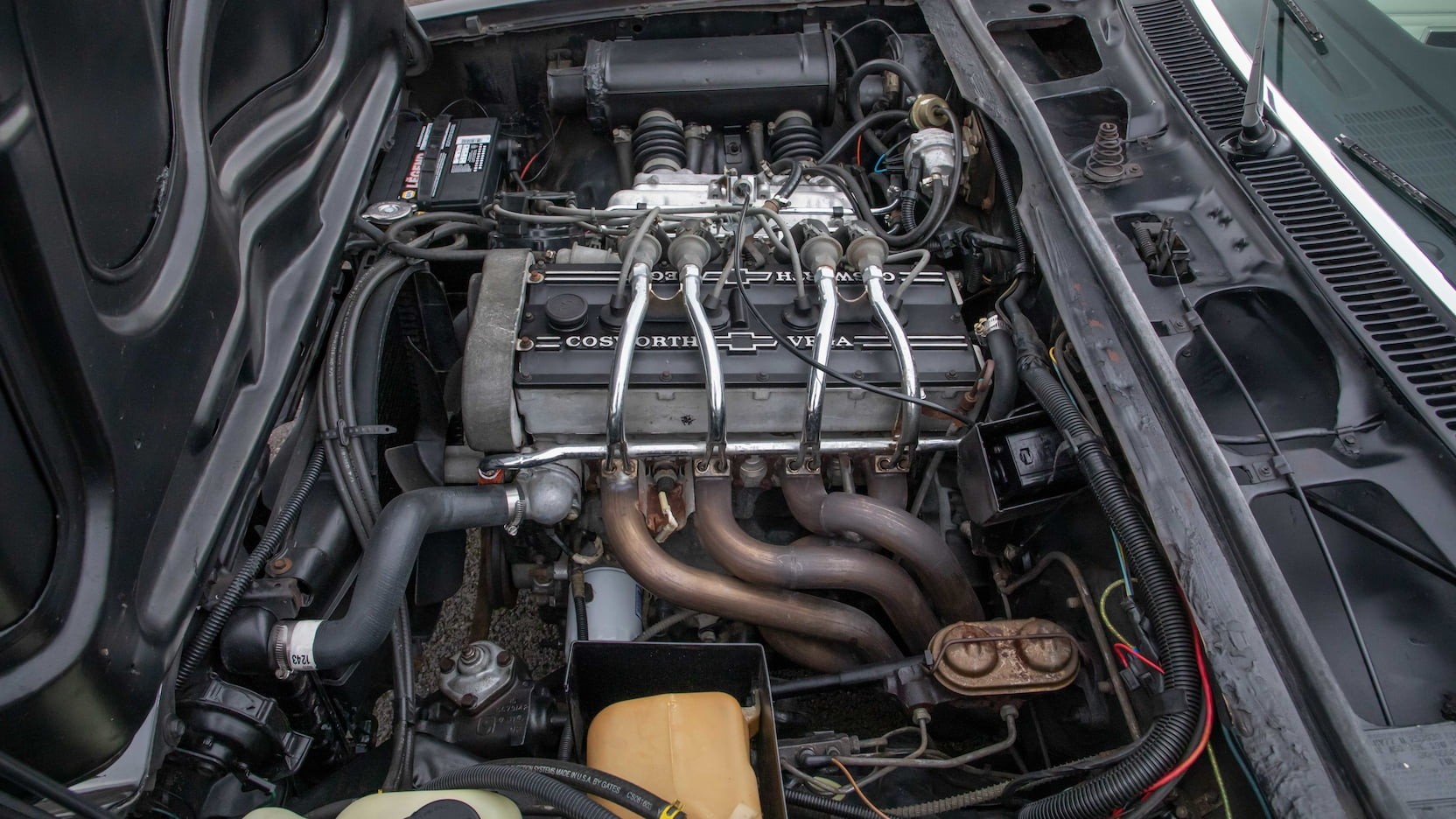 1975 Chevrolet Cosworth Vega engine bay
1975 Chevrolet Cosworth Vega engine bay
The Cosworth Vega’s journey began in 1969, fueled by the vision of Chevrolet’s then-general manager, John DeLorean. Anticipating burgeoning 2.0-liter racing championships both in the US and Europe, DeLorean persuaded Keith Duckworth of Cosworth to develop a no-holds-barred racing engine based on the Vega block. By March 1971, the first prototype roared to life on the dynamometer, showcasing an impressive 290 horsepower. However, this high-strung racing engine proved to be plagued with reliability issues, ultimately leading to the demise of the racing program.
Despite the racing setback, the Vega’s sales figures in the domestic market were less than stellar. The GT trim, while aesthetically appealing, lacked the performance and sporty image needed to significantly boost Vega’s overall appeal. DeLorean and his assistant chief engineer, Lloyd Reuss, saw an opportunity. They proposed a performance-focused Vega, powered by a detuned but dependable street version of the Cosworth racing engine. Their vision was clear: to create a car capable of challenging the established European sports sedans of the era, such as the BMW 2002tii and the Alfa Romeo GTV.
 1975 Chevrolet Cosworth Vega interior shifter
1975 Chevrolet Cosworth Vega interior shifter
Recognizing the Vega GT’s already competent handling, engineers opted for minimal suspension modifications for the Cosworth variant. The GT’s quick-ratio 16:1 steering box was retained, and sway bar sizes were tweaked to mitigate understeer. Furthermore, to manage wheel hop under hard acceleration, limiting cables were added to the Vega’s solid rear axle. The standard four-speed manual transmission received a shorter 3.7:1 first gear, enhancing off-the-line acceleration.
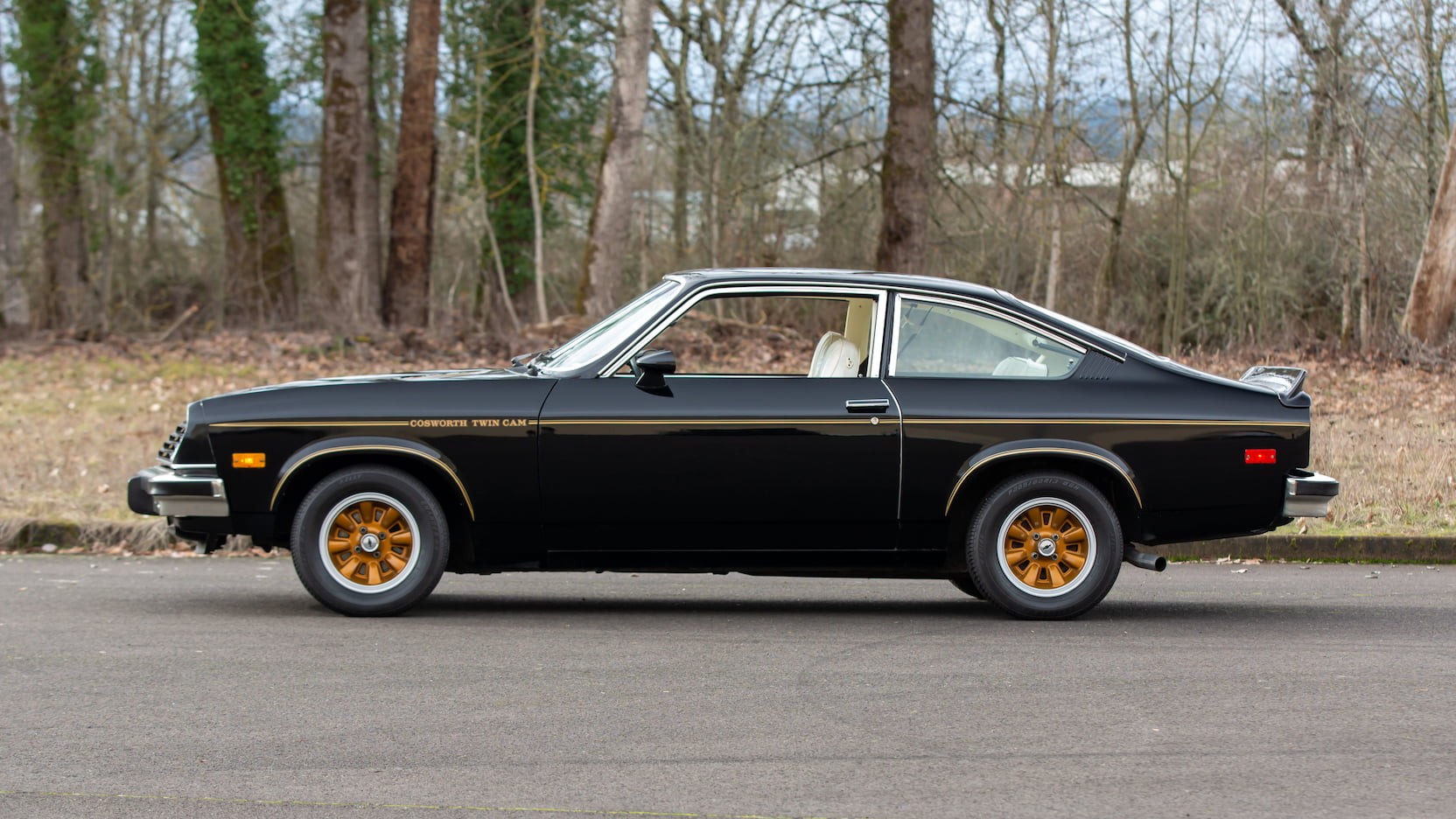 1975 Chevrolet Cosworth Vega side profile
1975 Chevrolet Cosworth Vega side profile
Hype and Reality: The Cosworth Vega’s Press Debut
In August 1973, General Motors officially announced the Chevrolet Cosworth Vega, igniting a wave of media excitement. Car and Driver magazine, known for its enthusiastic prose, proclaimed the Cosworth Vega as a “taut-muscled GT coupe” destined to “devastate the smugness of BMW 2002tii’s and five-speed Alfa GTVs.” The magazine further amplified the hype, suggesting a limited production run of 4000 meticulously hand-built machines, positioning it as a “show of technical force by Chevrolet” and predicting instant collector’s item status.
This initial press release was followed by a media test drive of prototype Cosworth Vegas at GM’s Milford, Michigan proving grounds in November 1973. The event generated numerous articles, including firsthand impressions of the car’s performance.
In a December 1973 issue of Competition Press and Autoweek, the driving experience was described in vivid detail:
“Accelerating the CosVeg through the smooth Chevy four-speed is an exhilarating experience indeed. It is not a low-end torquer, as you might expect, and getting it off the line in a hurry requires some fancy footwork, high revs, and abundant radial-tire smoke. But once it’s off, it’s off! Zero-to-60 times are consistently under 9 seconds, and quarter-mile times are in the neighborhood of 17 seconds, using the normal 7000-rpm redline.”
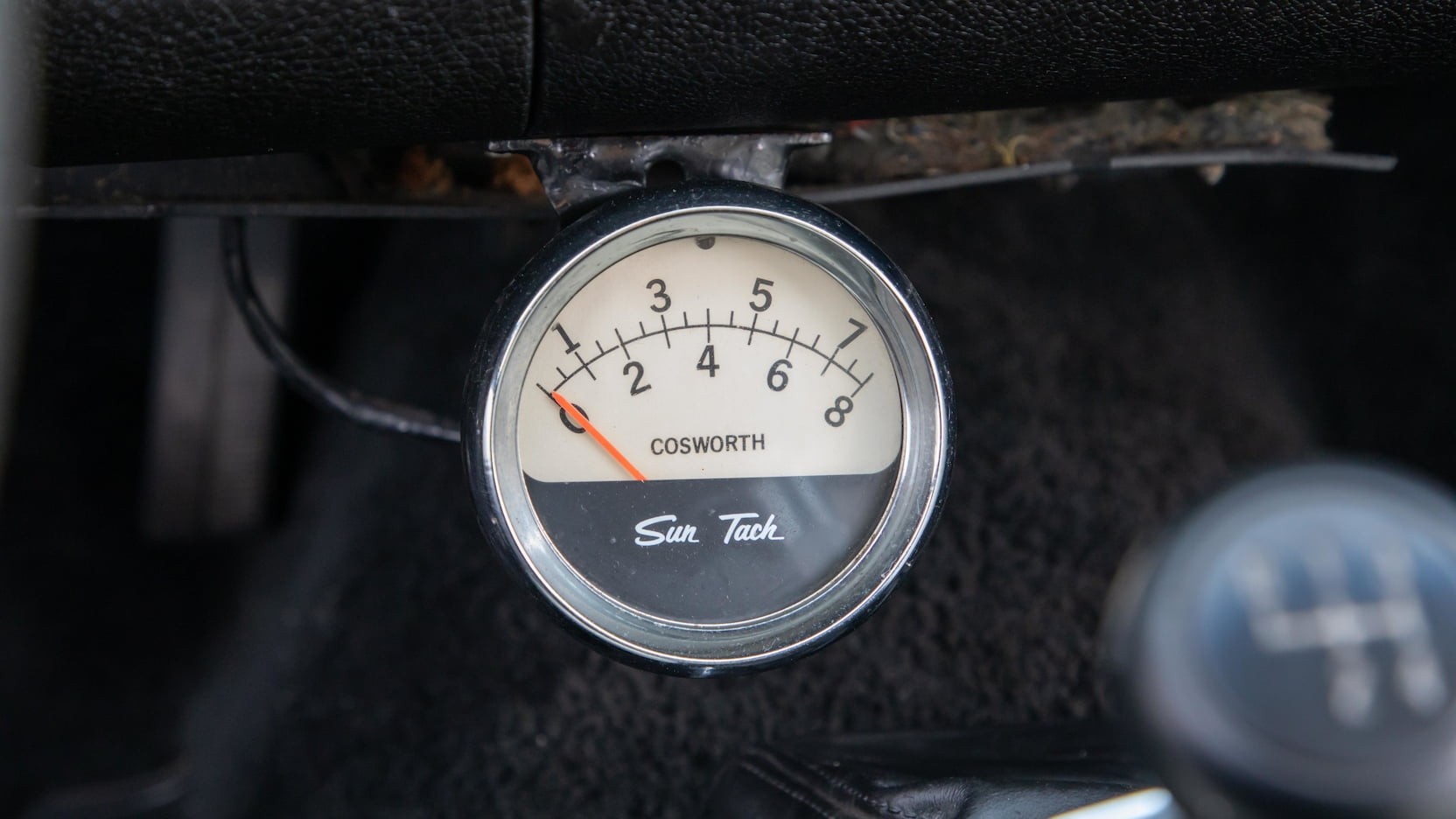 1975 Chevrolet Cosworth Vega Detail tach
1975 Chevrolet Cosworth Vega Detail tach
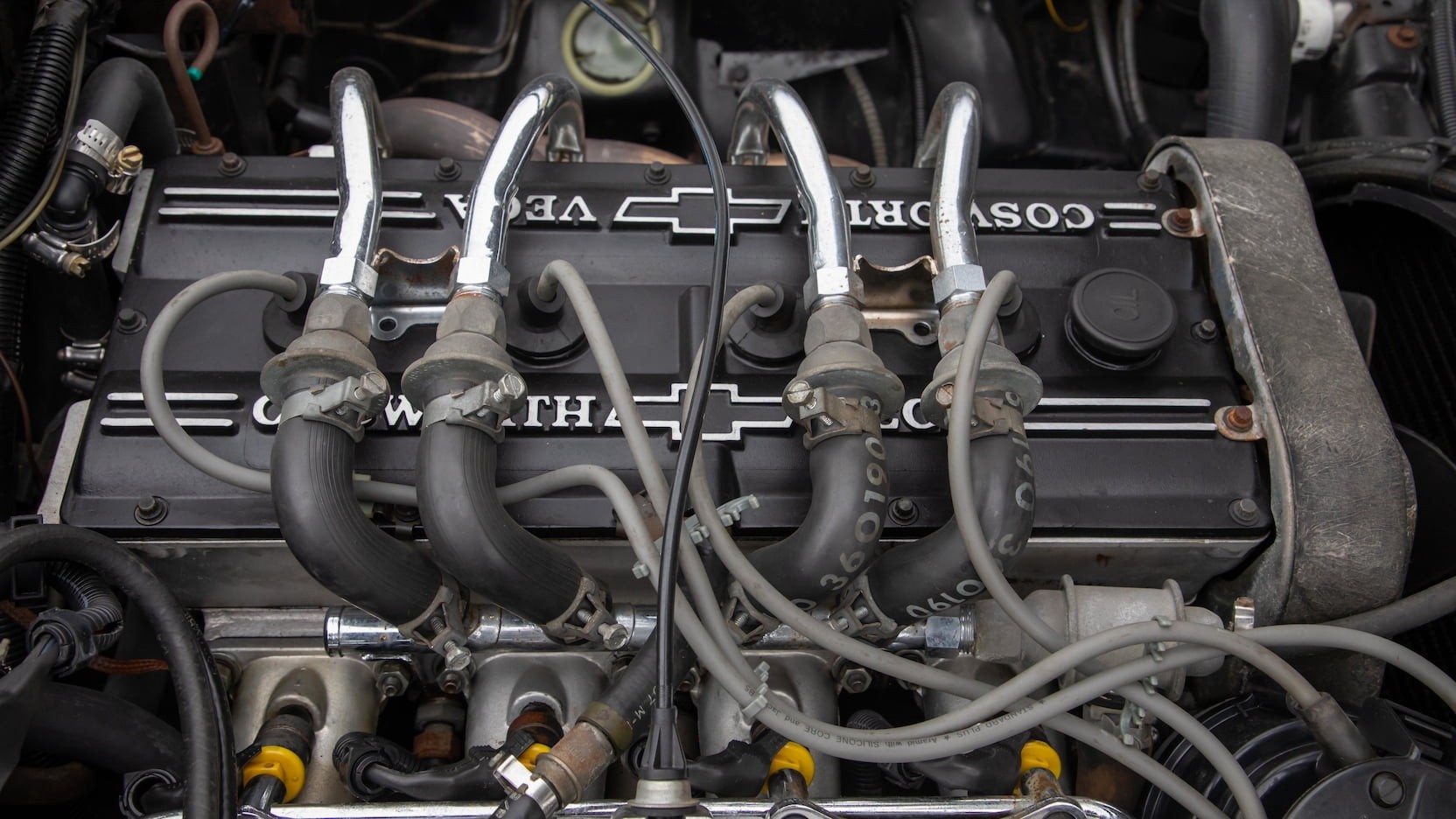 1975 Chevrolet Cosworth Vega Detail engine
1975 Chevrolet Cosworth Vega Detail engine
During the proving grounds drive, with Chevy development engineer Warren Frank as a passenger, the Cosworth Vega was pushed around the challenging “Ride and Handling” loop:
“There, it performs admirably, with the only fault being a tricky bump-steer condition, which causes it to lose, momentarily, its remarkably stable and neutral cornering attitude [on] washboard roads. Frank explained that they were still working on shock rates to remedy this, and to keep the wheels on the ground for a larger percentage of the time . . .”
Further testing on the “Seven Sisters” road course revealed another critical flaw:
“…which quickly revealed the CosVeg’s other glaring deficiency in its present state. Unaccountably, Chevrolet has not seen fit to give it a limited-slip differential. The Vega GT suspension, which is otherwise nearly flawless, is just not stiff enough to prevent the car from lifting its inside leg like an impolite dog on the hard, tight turns.
This results in massive wheelspin as all the CosVeg’s considerable power is transferred to the unloaded side, and the car skids helplessly sideways . . . Then the inside tire falls from the sky, finally recovers its bite, and off you go toward a repeat performance on the next turn. This behavior is barely acceptable in a below-average econobox . . . inexcusable in a car of this nature.”
Despite the positive initial impressions of the engine and handling, the lack of a limited-slip differential was highlighted as a significant drawback for a performance-oriented vehicle.
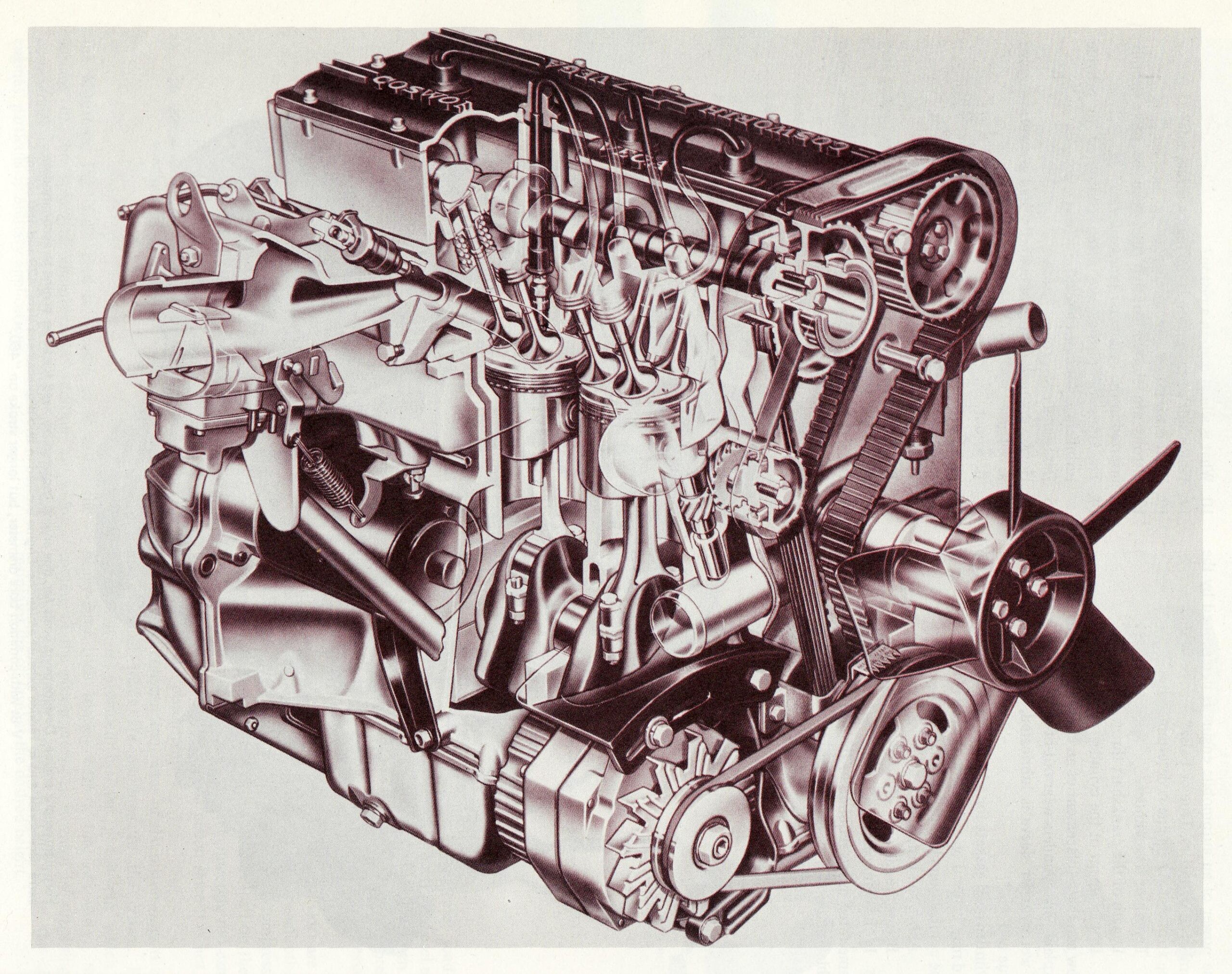 Chevrolet Cosworth Vega engine cutaway
Chevrolet Cosworth Vega engine cutaway
Under the Hood: The Cosworth Twin-Cam Engine
The heart of the Cosworth Vega was its meticulously engineered 2.0-liter engine. While still based on the Vega’s aluminum block, the Cosworth version featured a reduced stroke to achieve the 2.0-liter displacement, a desirable characteristic for racing regulations at the time. The crowning achievement was the 16-valve, twin-cam, crossflow cylinder head designed and manufactured by Cosworth. This advanced head was paired with Bendix electronic fuel injection, marking the Cosworth Vega as the first General Motors passenger car to utilize this technology. The engine’s construction incorporated lightweight materials, including an aluminum camshaft housing and intake manifold, resulting in a 40-pound weight reduction compared to the base Vega’s 2.3-liter engine.
Durability enhancements were also implemented. The forged steel crankshaft underwent a “tuftriding” chemical hardening process to strengthen bearing surfaces. Forged aluminum pistons with valve clearance cutouts were used, and a large oil sump was incorporated. However, to meet stringent emissions regulations and CAFE standards, the compression ratio was lowered to a modest 8.5:1. While this allowed the Cosworth Vega to run on regular low-lead gasoline, it significantly hampered performance.
The engine’s development journey saw a dramatic reduction in targeted horsepower. Initial projections aimed for a potent 185 horsepower with a high 12:1 compression ratio, requiring premium fuel. However, escalating emissions requirements forced a series of compression ratio reductions – first to 10.5:1, then 9.5:1, and finally to 8.5:1. Consequently, the power output plummeted from the initial 185 hp to 135 hp, and ultimately to a production rating of just 110 hp (SAE net).
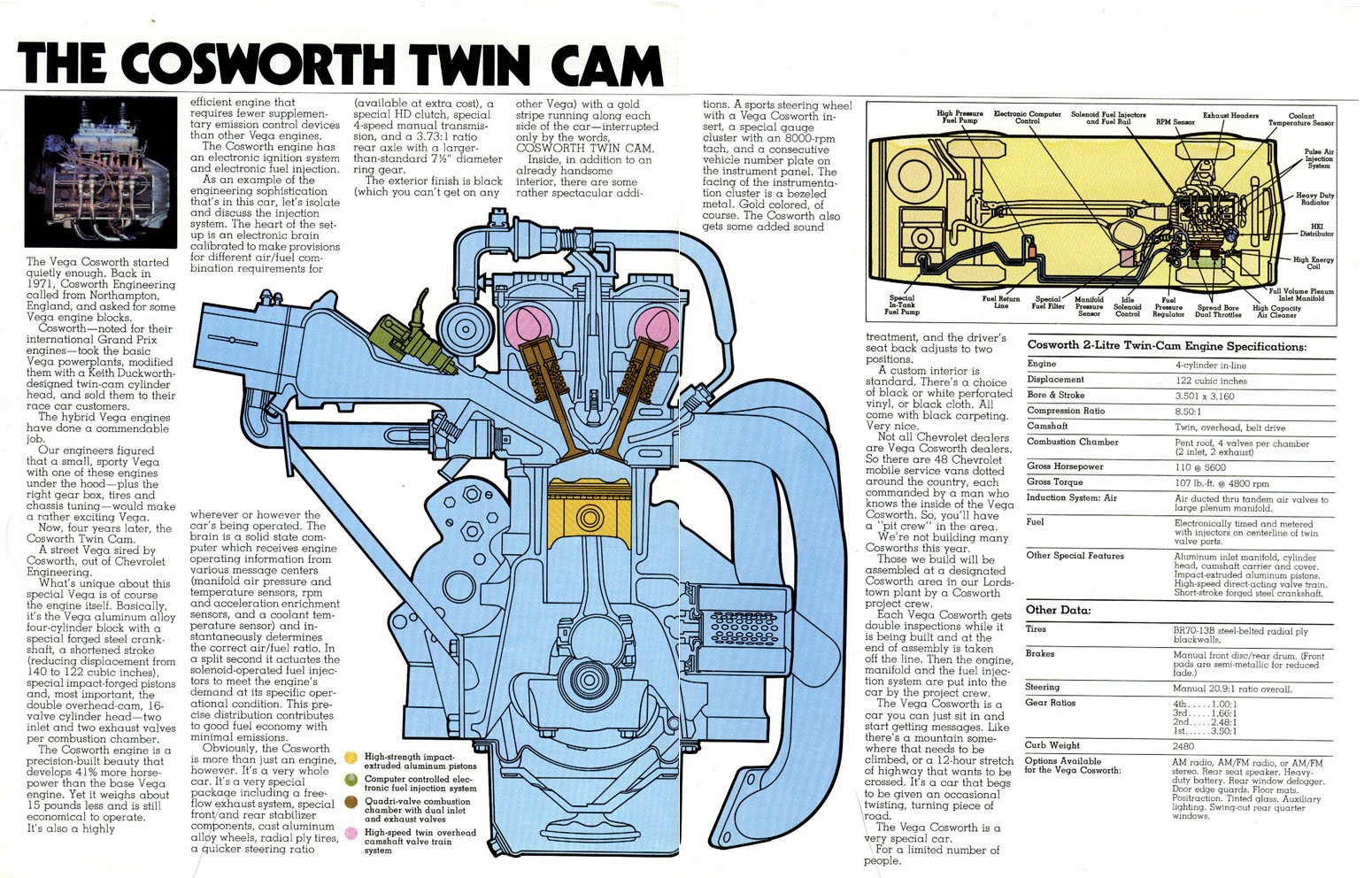 1976 Chevrolet Vega Cosworth 02 03
1976 Chevrolet Vega Cosworth 02 03
The Cosworth engines were hand-assembled at GM’s Tonawanda engine plant in New York, in a specialized “clean room” originally built for the high-performance aluminum-block 427 ZL-1 V-8. These engines were then shipped to the Vega assembly plant in Lordstown, Ohio, where they were carefully installed in designated Cosworth Vega bodies on a separate, slower assembly line. Chevrolet emphasized meticulous quality control, initially projecting a very slow production rate, eventually aiming for one car per hour. Cosworth Vega buyers were promised exclusive factory access via a toll-free phone number and prioritized service should any issues arise.
For the inaugural 1975 model year, production was capped at 5000 units, a figure strategically chosen to meet FIA Group 1 “touring car” racing homologation requirements for production-based vehicles.
However, regulatory hurdles continued to plague the Cosworth Vega. The Environmental Protection Agency (EPA) did not grant emissions compliance certification until March 14, 1975, causing significant delays. Production commenced immediately after certification, as Chevrolet scrambled to fulfill pre-orders generated by the initial positive press.
The 1975 Cosworth Vega was exclusively offered in black with gold accents. Gold pinstriping highlighted the subtly flared wheel arches and ran along the body sides, punctuated by “Cosworth Twin Cam” lettering in gold script just ahead of the doors. Inside, the Vega GT gauge cluster was set against a unique gold-tinted, machine-turned aluminum instrument panel.
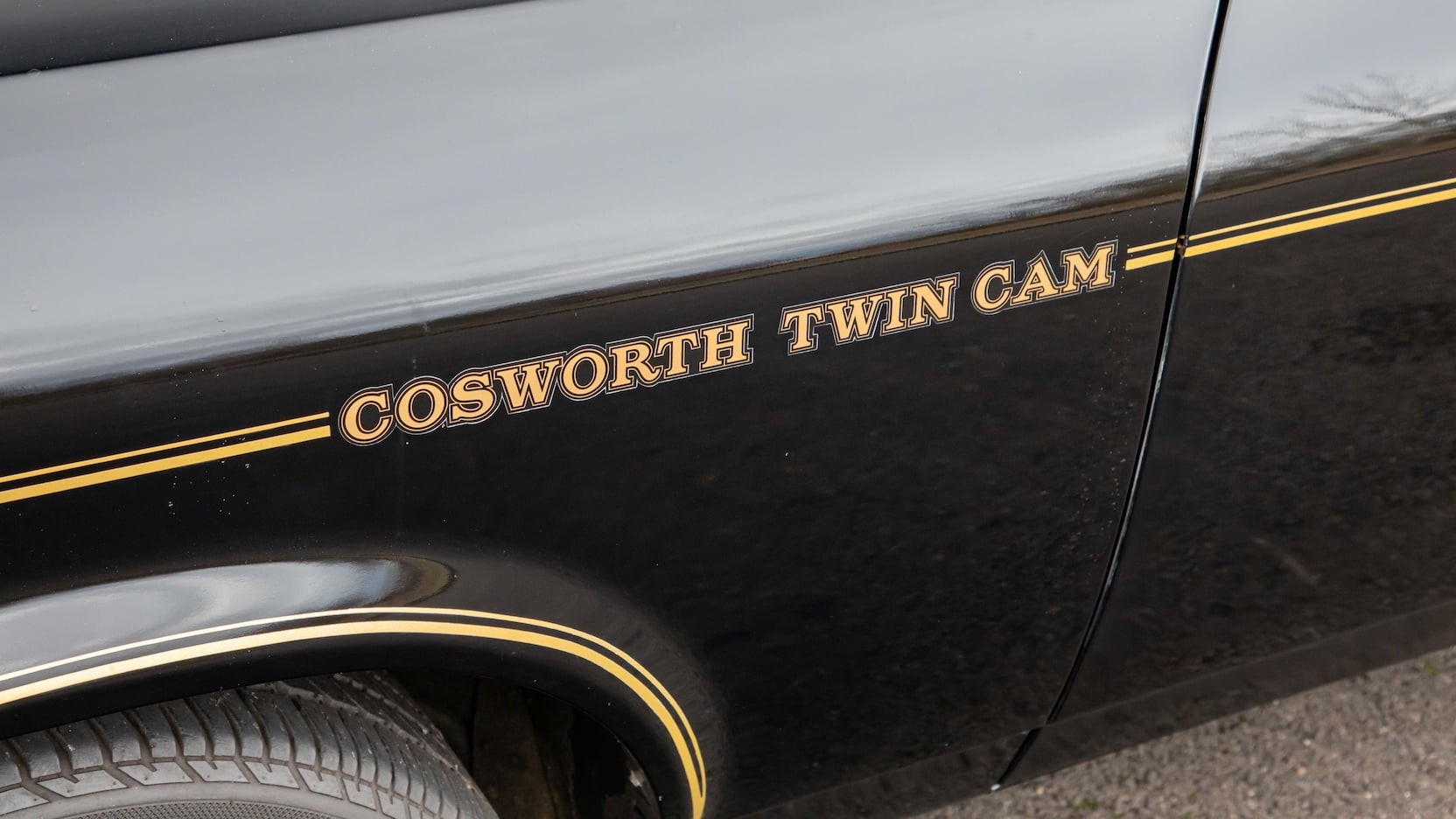 1975 Chevrolet Cosworth Vega Detail body detail
1975 Chevrolet Cosworth Vega Detail body detail
Two Years, Two Cams: The Cosworth Vega’s Limited Run
The Tonawanda engine plant’s “clean room” produced approximately 30 Cosworth Vega engines daily. However, the Lordstown assembly line could only manage a mere 1.6 Cosworth Vegas per hour, a stark contrast to the standard Vega’s production rate of 60 or more cars per hour. In total, only 2,061 Cosworth Vegas were manufactured for the 1975 model year.
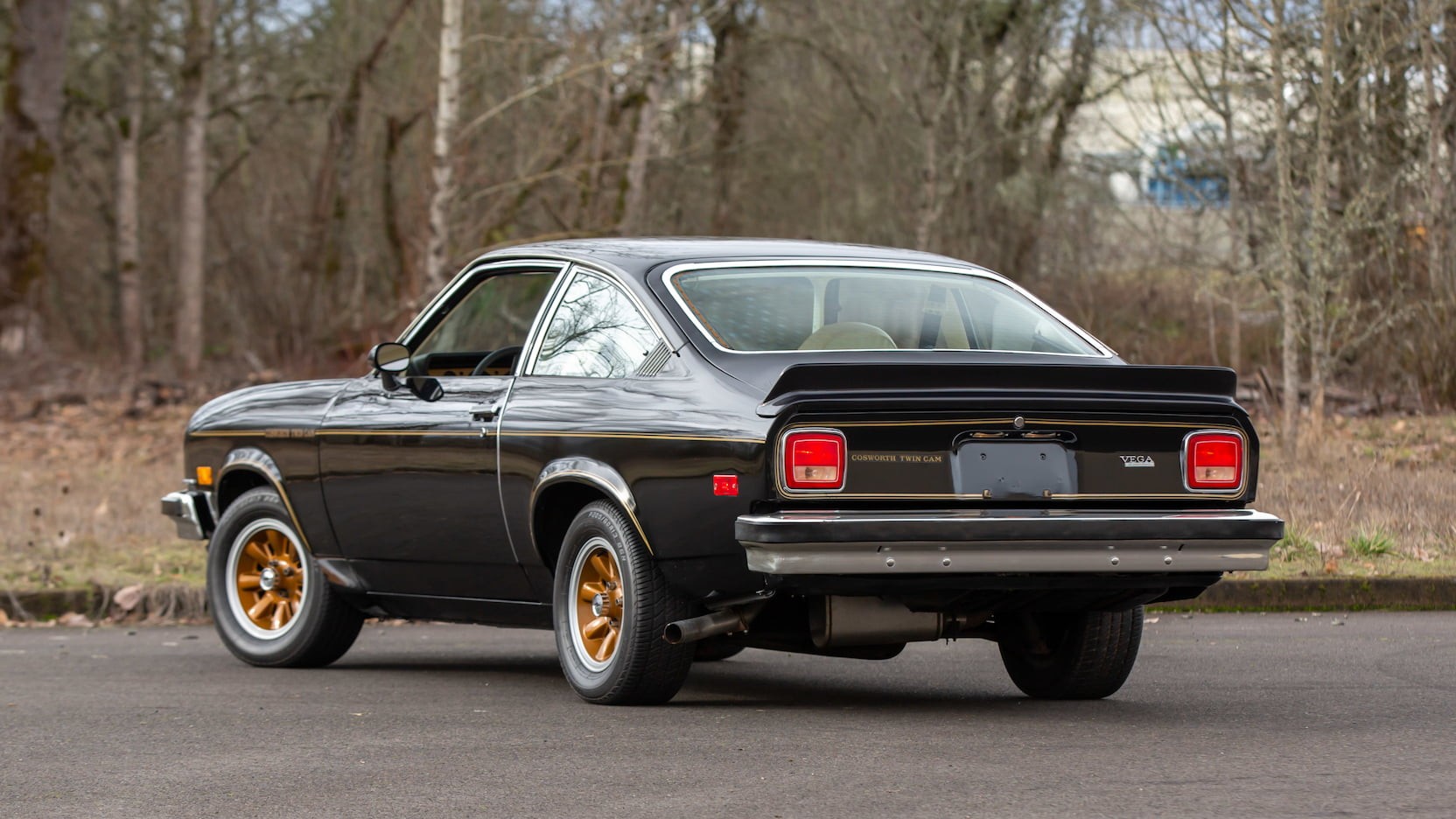 1975 Chevrolet Cosworth Vega rear three quarter
1975 Chevrolet Cosworth Vega rear three quarter
Ironically, the emissions detuning that sapped horsepower also yielded a positive side effect: the Cosworth Vega was the only General Motors passenger car certified for emissions compliance in all 50 US states. Car and Driver magazine later reported a pre-production 1974 Cosworth Vega achieving a 0-60 mph time of just 7.7 seconds, the quickest time recorded by the magazine for 1975. Despite the underwhelming 110 horsepower and 107 lb-ft of torque in production models, Car and Driver praised the 1975 Cosworth Vega’s “excellent balance,” highlighting its ideal roll-stiffness distribution and neutral handling characteristics.
The 1976 model year brought a facelift to the Vega, including a wider grille, redesigned tri-color taillights, and enhanced rustproofing measures. The dual exhaust outlets of the 1975 model were replaced with a single tailpipe, and interior trim changes were implemented. A new Borg-Warner five-speed manual overdrive transmission became optional, paired with a shorter 4.10:1 rear axle ratio. Additional new options included a “Sky-Roof” with tinted sliding glass, an eight-track tape player, and expanded exterior and interior color choices.
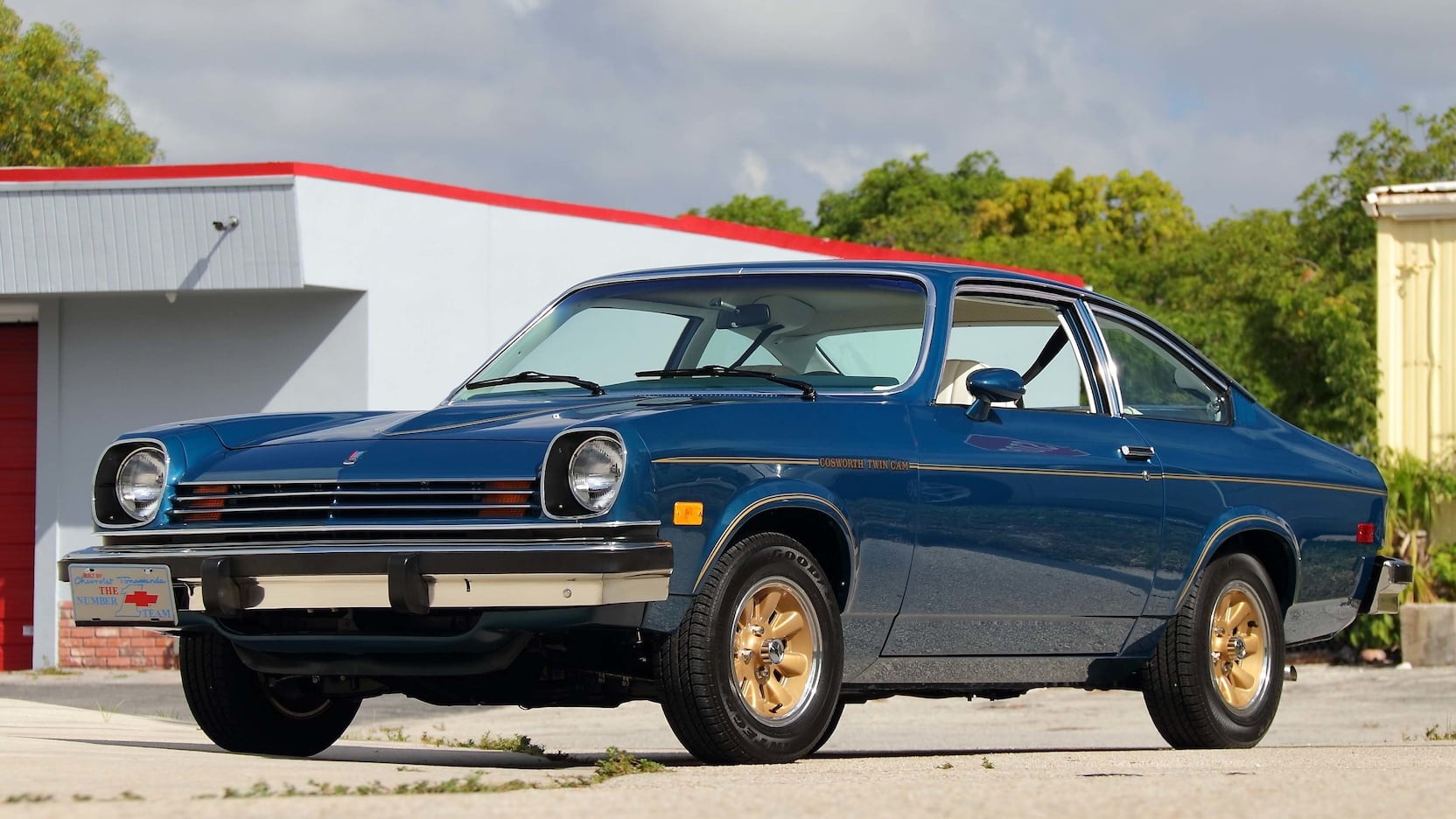 1976 Chevrolet Cosworth Vega front three quarter
1976 Chevrolet Cosworth Vega front three quarter
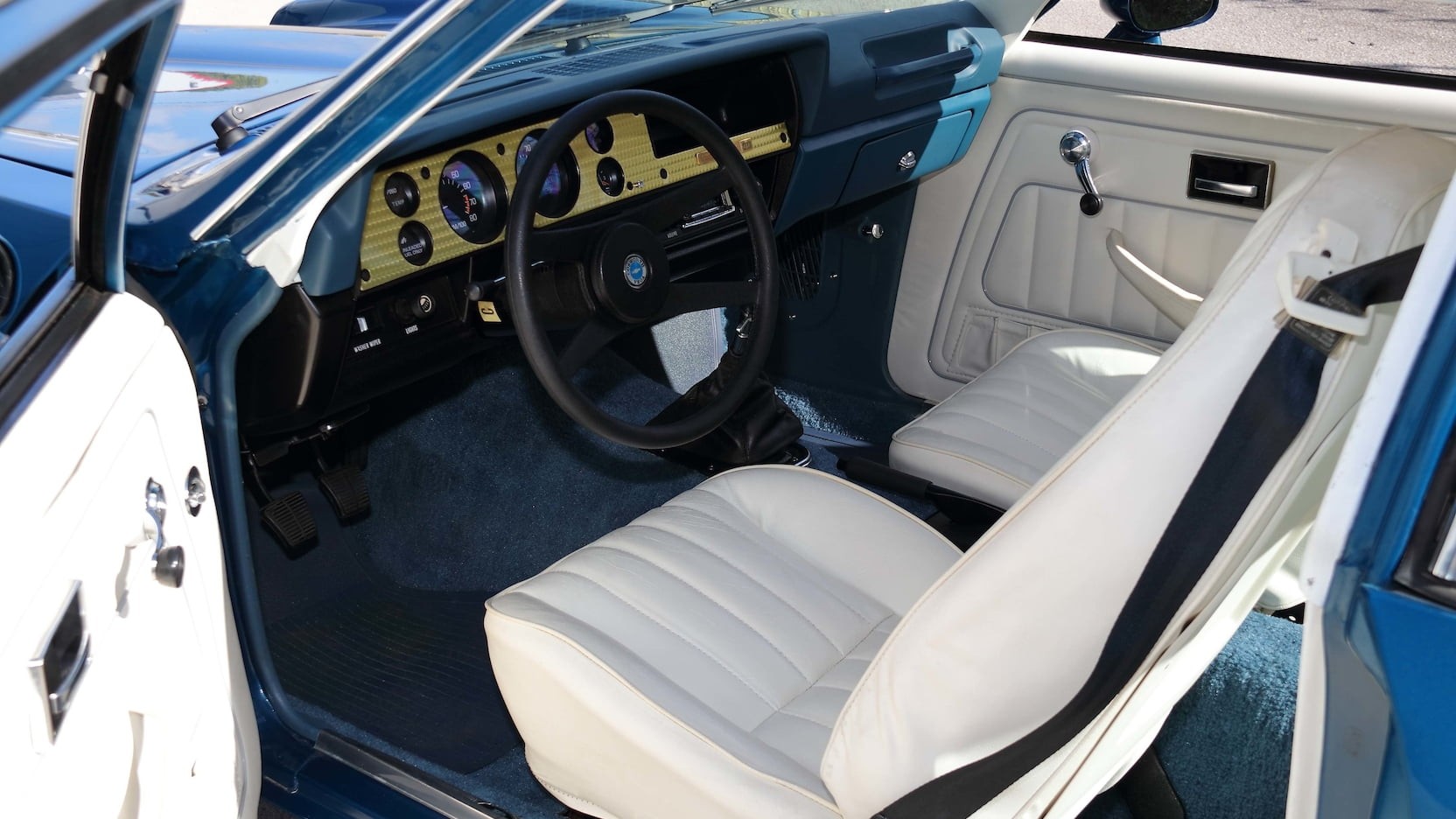 1976 Chevrolet Cosworth Vega interior
1976 Chevrolet Cosworth Vega interior
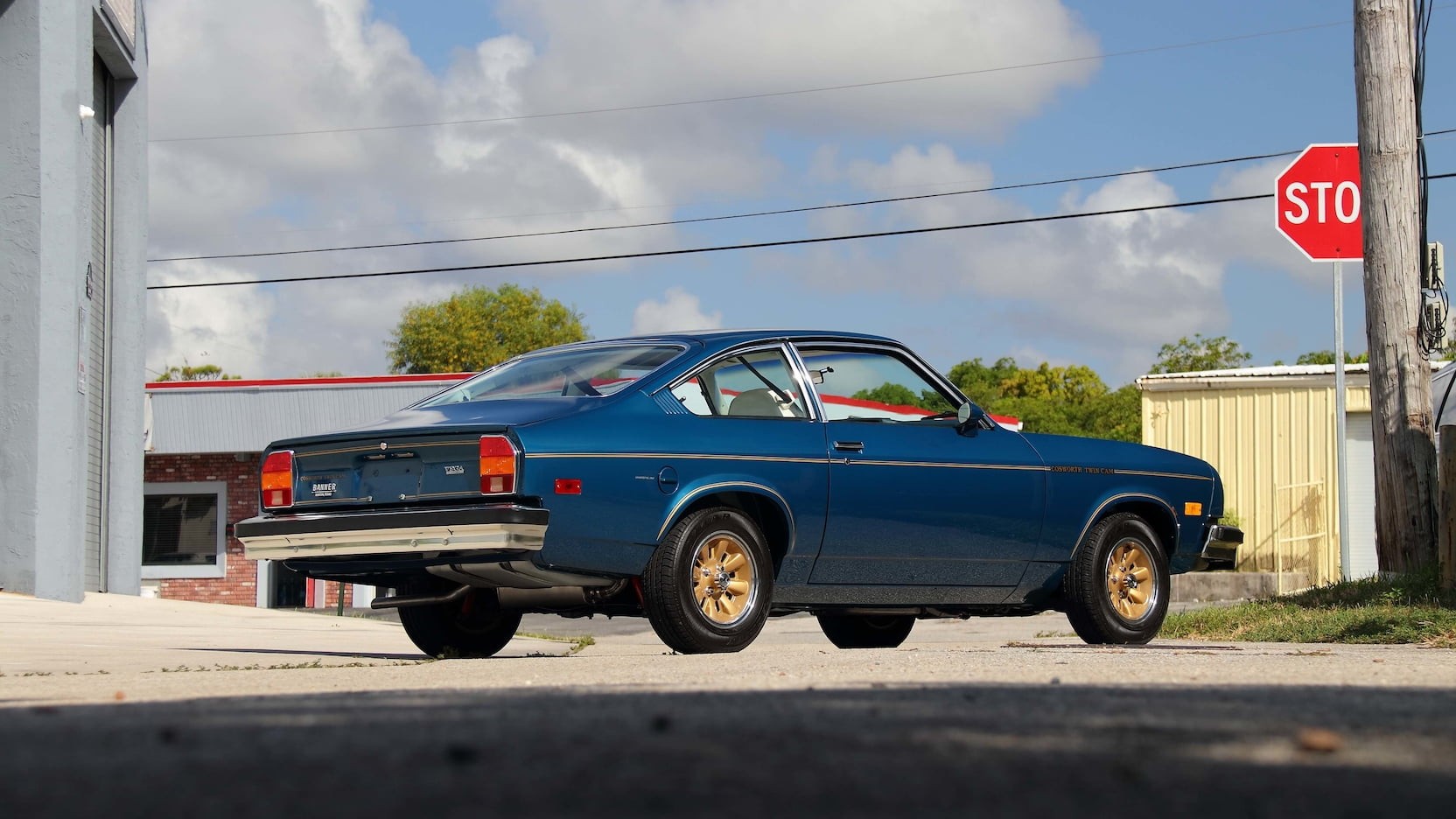 1976 Chevrolet Cosworth Vega rear three quarter
1976 Chevrolet Cosworth Vega rear three quarter
However, these updates were not enough to save the Cosworth Vega. In November 1975, GM made the decision to discontinue the model after the 1976 model year. Despite its short lifespan, the Cosworth Vega continued to garner positive reviews. Road & Track lauded the 1976 model’s “very good” handling after testing. Road Test magazine’s 1976 “Super-Coupe Shootout” pitted the Cosworth Vega against European rivals like Alfa Romeo, Mazda, Lancia, and Saab, and concluded:
“Right there at the top, and by a long way . . . is the Cosworth Vega. It had the fastest 0–60 time, the fastest quarter-mile time, and [it] tied with the Saab for the shortest braking distance . . . The Cosworth is American, and a collector’s item, and it came close, damn close, to winning the whole thing.”
Ultimately, a combination of factors contributed to the Cosworth Vega’s demise. Had it lived up to its initial performance promises and been priced closer to the rumored $4000 target, its story might have been different. However, pricing became a significant obstacle. During the Vega’s seven-year production run, inflation and increased regulatory costs drove up new car prices by 50%. The 1975 Cosworth Vega carried a sticker price of $5918, nearly double the cost of a base Vega and only slightly less than a 1975 Chevrolet Corvette.
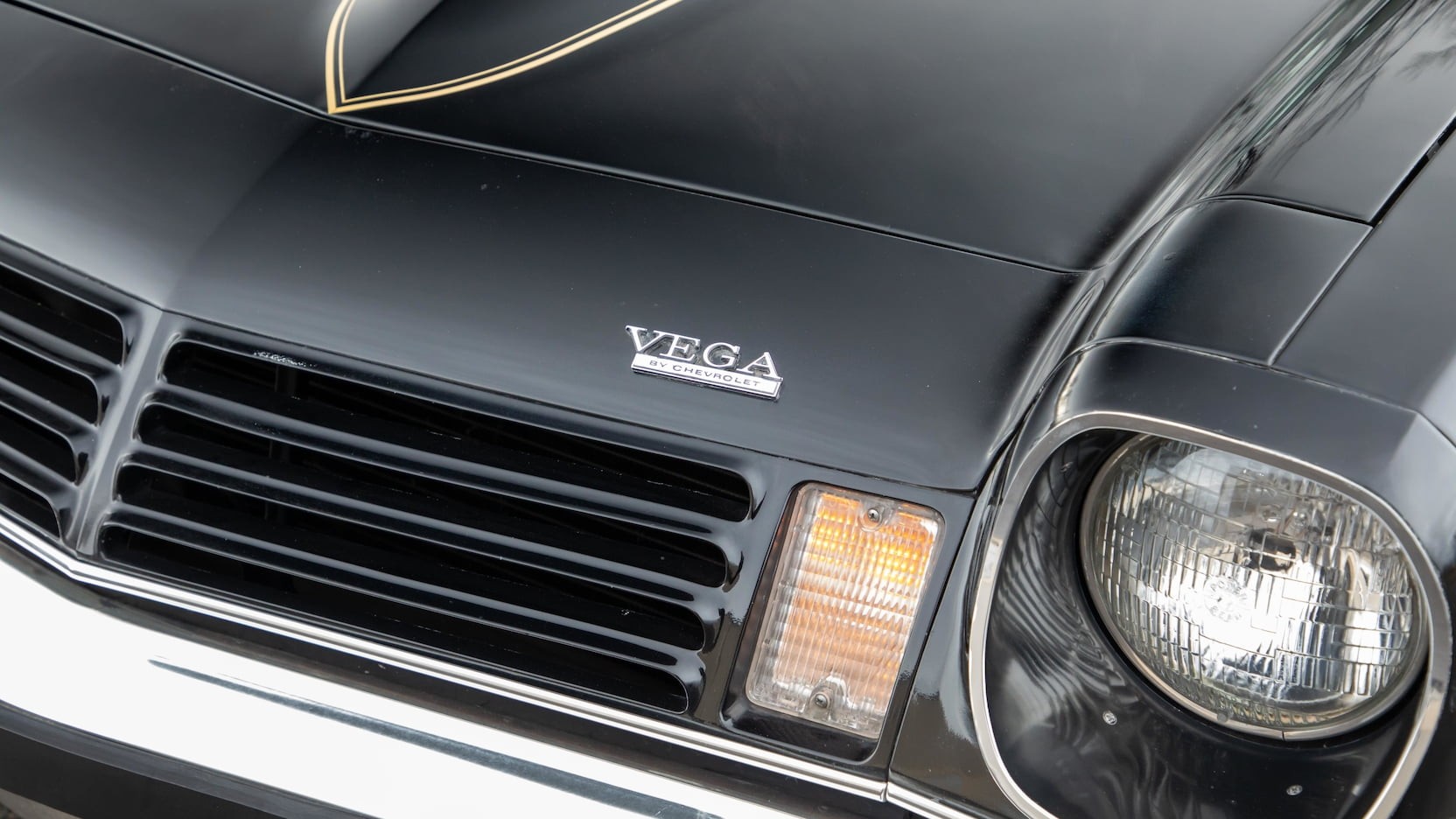 1975 Chevrolet Cosworth Vega grille closeup
1975 Chevrolet Cosworth Vega grille closeup
Furthermore, the Cosworth Vega was still fundamentally a Vega, and the base model had developed a negative reputation due to issues ranging from reliability and safety concerns to rust and engine durability. Despite recall campaigns and design improvements, these problems tarnished the Vega’s image and, by association, the Cosworth variant.
In 1976, only 1,447 Cosworth Vegas were produced, bringing the total production run for both model years to a mere 3,508 vehicles. The remaining Cosworth engines, short of the 500 initially disassembled, were ultimately scrapped. Regular Vega production ceased after the 1977 model year.
The Chevrolet Cosworth Vega represents a poignant “what if” in automotive history. It possessed the core ingredients for success: a sophisticated, high-revving Cosworth engine and competent handling. However, factors beyond its control, including emissions regulations, pricing pressures, and the baggage of the base Vega’s reputation, conspired to cut its life short. Today, the Cosworth Vega is a rare and collectible reminder of Chevrolet’s ambitious but ultimately unrealized attempt to build a world-class performance subcompact. Its legacy endures among enthusiasts who appreciate its unique engineering and ponder what could have been.
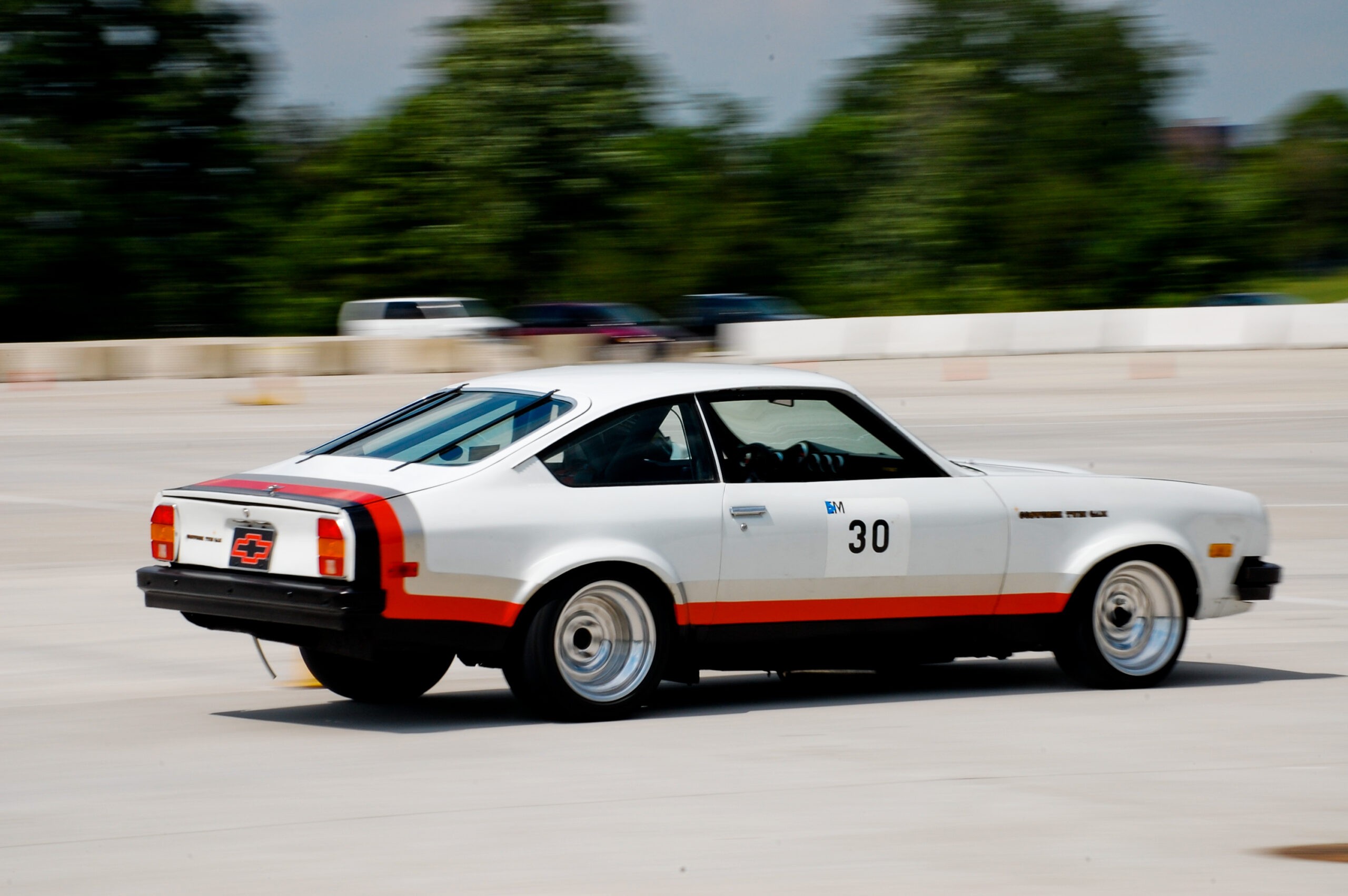 Chevrolet Cosworth Vega Autocross Action rear three quarter
Chevrolet Cosworth Vega Autocross Action rear three quarter
For more in-depth information, visit the Cosworth Vega Owners’ Association (CVOA): cosworthvega.com.
Explore more automotive stories on the Hagerty Media homepage.

